Recent Blog Posts
Options for Families After a Fatal Pedestrian Accident
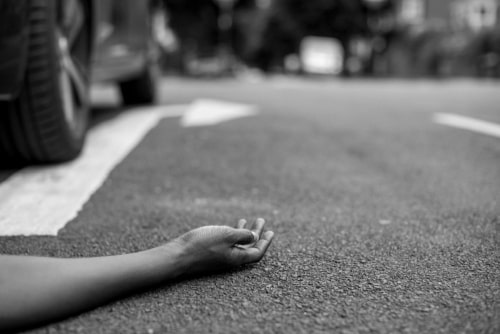 The loss of a loved one in a pedestrian accident is a heartbreaking situation that no family should ever have to face. Ensure you understand your legal options and the steps you can take to seek justice on behalf of your family member. There are several avenues available to families who have lost a family member in a fatal pedestrian accident, and an Illinois lawyer can help you figure out which may be best for you.
The loss of a loved one in a pedestrian accident is a heartbreaking situation that no family should ever have to face. Ensure you understand your legal options and the steps you can take to seek justice on behalf of your family member. There are several avenues available to families who have lost a family member in a fatal pedestrian accident, and an Illinois lawyer can help you figure out which may be best for you.
Wrongful Death Lawsuit
One of the primary options for families is to file a wrongful death lawsuit. Under the Illinois Wrongful Death Act (740 ILCS 180/), the executor of the deceased person’s estate may bring legal action against the party responsible for the fatal accident. This lawsuit seeks to recover damages for the family’s loss, including:
Legal Rights After a Boating Accident in Illinois
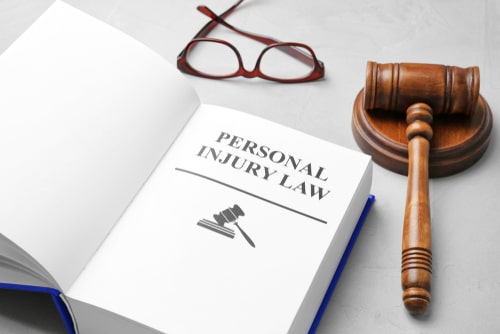 Boating accidents can be distressing events resulting in serious injuries, significant property damage, and sometimes fatalities. If you were involved in a boating accident, it is essential to be aware of your legal rights and the necessary actions to protect them. An Illinois lawyer can help you with the legal aspects of boating accidents.
Boating accidents can be distressing events resulting in serious injuries, significant property damage, and sometimes fatalities. If you were involved in a boating accident, it is essential to be aware of your legal rights and the necessary actions to protect them. An Illinois lawyer can help you with the legal aspects of boating accidents.
What to Know About the Illinois Boating Laws
Illinois has specific laws governing the operation of boats and other watercraft. These laws are designed to ensure the safety of everyone on the water. All boat operators must complete a boating safety course approved by the Illinois Department of Natural Resources (IDNR).
Boat operators must also maintain a proper lookout and operate their vessels at safe speeds, and boating under the influence of alcohol or drugs is strictly prohibited. All boats must be equipped with proper safety equipment, such as life jackets and fire extinguishers.
Insurance Disputes After a Car Accident in Illinois
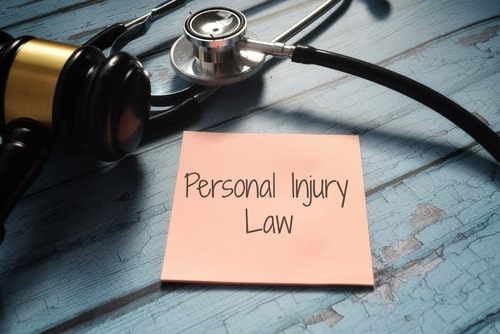 Dealing with the effects of a car accident can be challenging and stressful, especially when it comes to dealing with insurance companies. Insurance disputes are common, and knowing your rights and how to handle these situations effectively is essential. There are some important steps you can take with an Illinois lawyer to resolve insurance disputes and protect your interests after a car accident.
Dealing with the effects of a car accident can be challenging and stressful, especially when it comes to dealing with insurance companies. Insurance disputes are common, and knowing your rights and how to handle these situations effectively is essential. There are some important steps you can take with an Illinois lawyer to resolve insurance disputes and protect your interests after a car accident.
What to Know About Your Insurance Policy
The first step in handling any insurance dispute is thoroughly reviewing your insurance policy. Familiarize yourself with the coverage types, limits, and any exclusions or limitations. In Illinois, all drivers are required to carry minimum liability insurance, which covers bodily injury and property damage caused to others in an accident. If you have additional coverage, such as collision or comprehensive insurance, understanding your policy will help you know what to expect from your insurer.
Compensation After a Sidewalk Accident in Illinois
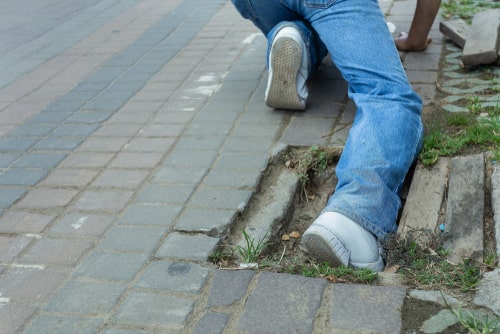 Sidewalks are essential to our daily lives, providing a safe and convenient way for pedestrians to navigate cities and towns. However, when sidewalks are not properly maintained, they can become hazardous and lead to severe accidents. In Illinois, property owners are legally responsible for ensuring that their sidewalks are safe for public use. If you have been injured in a sidewalk accident, it is crucial to understand how to determine liability and pursue compensation for your losses. An Illinois lawyer can help you figure out if you have potential for a case.
Sidewalks are essential to our daily lives, providing a safe and convenient way for pedestrians to navigate cities and towns. However, when sidewalks are not properly maintained, they can become hazardous and lead to severe accidents. In Illinois, property owners are legally responsible for ensuring that their sidewalks are safe for public use. If you have been injured in a sidewalk accident, it is crucial to understand how to determine liability and pursue compensation for your losses. An Illinois lawyer can help you figure out if you have potential for a case.
Understanding Property Owner Liability
In Illinois, property owners are generally responsible for maintaining the sidewalks adjacent to their property. This includes both private property owners and municipalities. The Illinois Sidewalk Law states that property owners have a duty to exercise reasonable care in maintaining their sidewalks to prevent pedestrian injuries.
Examples of Common Back Injuries in Car Accidents in Illinois
 Car accidents can result in a variety of injuries, with back injuries being among the most common and debilitating. In Illinois, victims of car accidents often suffer from back injuries that can have long-lasting effects on their physical health and well-being. From herniated discs to back sprains, fractured vertebrae, and torn muscles, these injuries can significantly impact a person’s quality of life. If you were in a car accident and suffered a back injury, contact an attorney trained in Illinois personal injury law, as you may be entitled to compensation.
Car accidents can result in a variety of injuries, with back injuries being among the most common and debilitating. In Illinois, victims of car accidents often suffer from back injuries that can have long-lasting effects on their physical health and well-being. From herniated discs to back sprains, fractured vertebrae, and torn muscles, these injuries can significantly impact a person’s quality of life. If you were in a car accident and suffered a back injury, contact an attorney trained in Illinois personal injury law, as you may be entitled to compensation.
With over 85 years of combined experience, the skillful attorneys at Salvi & Maher, LLP have a demonstrated track record of assisting clients in a wide variety of accidents, many of which include motor vehicles. If you suffered an injury and do not know what to do, giving our firm a call is a wise first step toward pursuing a full and complete recovery.
Common Causes of Fatal Bicycle Accidents in Illinois
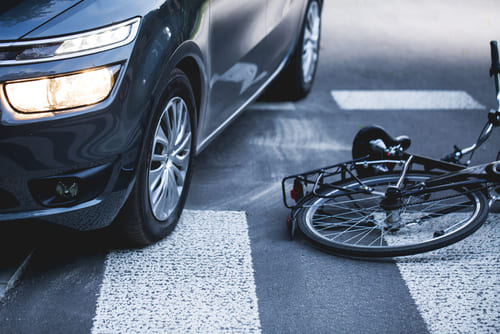 Bicycling is a popular mode of transportation and recreation in Illinois, but sadly, fatal accidents involving bicycles are far too often an unfortunate and devastating reality. Understanding the common causes of fatal bicycle accidents in Illinois is important for promoting safety and preventing tragedies on the road. However, when a fatal bicycle accident does occur, family members may be unsure how to proceed. If you lost an immediate family member in a bicycle accident, you have legal options that are worth knowing about, which may include filing a wrongful death case. Discuss with your attorney whether this option makes sense for your situation.
Bicycling is a popular mode of transportation and recreation in Illinois, but sadly, fatal accidents involving bicycles are far too often an unfortunate and devastating reality. Understanding the common causes of fatal bicycle accidents in Illinois is important for promoting safety and preventing tragedies on the road. However, when a fatal bicycle accident does occur, family members may be unsure how to proceed. If you lost an immediate family member in a bicycle accident, you have legal options that are worth knowing about, which may include filing a wrongful death case. Discuss with your attorney whether this option makes sense for your situation.
At Salvi & Maher, LLP, we are proud to say we have recovered hundreds of millions of dollars for our clients. When clients come to us, even in the most difficult of circumstances, they can rest assured their case will be handled as professionally as possible.
Three Ways Improperly Stored Cargo Can Lead to Truck Accidents in Illinois
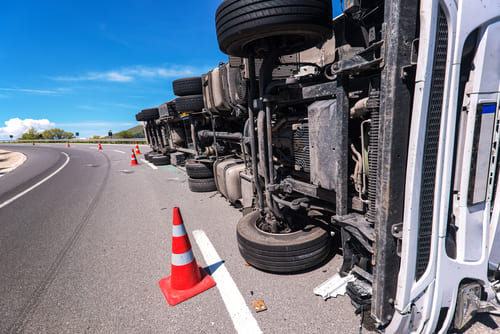 Truck accidents in Illinois can have devastating, sometimes even fatal, consequences. One common cause of these destructive accidents is improperly stored cargo in the truck. When cargo is not secured or stored correctly, it can lead to dangerous situations on the road. If you were injured in an accident involving an improperly loaded truck, you have rights you need to be aware of. Contact an injury attorney in Illinois to get the assistance you require.
Truck accidents in Illinois can have devastating, sometimes even fatal, consequences. One common cause of these destructive accidents is improperly stored cargo in the truck. When cargo is not secured or stored correctly, it can lead to dangerous situations on the road. If you were injured in an accident involving an improperly loaded truck, you have rights you need to be aware of. Contact an injury attorney in Illinois to get the assistance you require.
Here Are the Ways Poorly Loaded Trucks Can Cause Accidents
-
Shifted cargo and loss of control – Improperly stored cargo can shift during transit, causing the truck to become unbalanced. This can lead to the driver losing control of the vehicle, especially when making sharp turns or sudden stops. This can result in serious accidents, including rollovers or collisions with other vehicles on the road. Truck drivers and companies must ensure cargo is secured correctly and distributed within the truck to prevent such accidents.
Examples of Serious Injuries in Illinois Personal Injury Cases
 Serious injuries, often referred to as catastrophic injuries, can have a significant impact on a person’s life, often requiring extensive medical treatment and potentially leading to long-term disabilities. In Illinois, understanding what qualifies as a serious injury is important for people pursuing compensation for their injuries. If you were injured and have questions regarding whether your injury qualifies as serious, contact a lawyer in Illinois and explain your situation. A qualified attorney will sit down with you to discuss your situation and see what legal options you may be able to pursue.
Serious injuries, often referred to as catastrophic injuries, can have a significant impact on a person’s life, often requiring extensive medical treatment and potentially leading to long-term disabilities. In Illinois, understanding what qualifies as a serious injury is important for people pursuing compensation for their injuries. If you were injured and have questions regarding whether your injury qualifies as serious, contact a lawyer in Illinois and explain your situation. A qualified attorney will sit down with you to discuss your situation and see what legal options you may be able to pursue.
With over 85 years of combined legal experience, the talented legal professionals at Salvi & Maher, LLP have a proven track record of assisting clients in even the most difficult circumstances. With an eye for detail and a client-focused approach to personal injury law, injured clients can feel confident that the dedicated legal professionals at Salvi & Maher & Maher, LLP, will get the job done.
Examples of Manufacturers' Defects in Scooter Accidents in Illinois
 Scooters have become a popular mode of transportation in urban areas, offering convenience and eco-friendly mobility. However, when manufacturers' defects are present in scooters, they can pose a serious risk to riders, leading to terrible personal injuries. If you suffered injuries in a scooter accident and believe a manufacturing defect is to blame, contact a lawyer to understand more about the situation. If you decide to file a lawsuit, your attorney can help you make sure you meet the Illinois two-year statute of limitations and pursue whatever compensation may be owed to you.
Scooters have become a popular mode of transportation in urban areas, offering convenience and eco-friendly mobility. However, when manufacturers' defects are present in scooters, they can pose a serious risk to riders, leading to terrible personal injuries. If you suffered injuries in a scooter accident and believe a manufacturing defect is to blame, contact a lawyer to understand more about the situation. If you decide to file a lawsuit, your attorney can help you make sure you meet the Illinois two-year statute of limitations and pursue whatever compensation may be owed to you.
Faulty Brakes and Acceleration Systems
One common manufacturer defect in scooters that can lead to personal injuries is faulty brakes and acceleration systems. Malfunctioning brakes can prevent riders from stopping in time to avoid collisions. At the same time, erratic acceleration systems can cause sudden speed changes, leading to loss of control and accidents resulting in injuries.
Common Back Injuries in Rear-End Car Accidents in Illinois
 Rear-end car accidents are one of the most common types of collisions in Illinois and can result in a variety of back injuries. These injuries can range from minor strains and sprains to whiplash and even slipped discs or broken backs.
Rear-end car accidents are one of the most common types of collisions in Illinois and can result in a variety of back injuries. These injuries can range from minor strains and sprains to whiplash and even slipped discs or broken backs.
Read-End Car Accidents Can Cause Many Serious Injuries
-
Whiplash - One of the most common back injuries resulting from rear-end car accidents is whiplash. Whiplash occurs when the head and neck are suddenly forced backward and then forward, causing rapid and unnatural movement to the spine. Whiplash most often leads to soft tissue damage, muscle strains, and neck pain, which can be debilitating and require extensive and ongoing treatment.
-
Herniated discs - Another common back injury in rear-end car accidents is herniated discs. The force of impact in a rear-end collision can cause the discs between the vertebrae in the spine to bulge or rupture, putting pressure on the nerves and resulting in pain, numbness, or weakness throughout the entire body. Various medical treatment options may be available for herniated discs, including medication, physical therapy, injections, or, in severe cases, surgery.
Contact a Lake County Vehicle Accident Attorney Who is Ready to Help You
If you or a member of your family has been injured in a motor vehicle accident, contact our office. Call 847-662-3303 to set up a free initial consultation at one of our four convenient locations. There is no risk because we only collect fees if you collect compensation. With offices in Libertyville, Waukegan, Richmond, and Chicago, we represent clients in Lake County, Cook County, DuPage County, and McHenry County.












